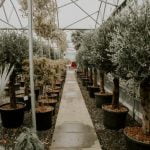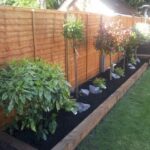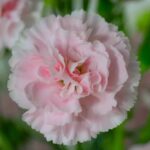Are you looking to transform your outdoor space into a lush and vibrant garden? Look no further. In this blog post, we will explore the importance of garden design and provide you with a variety of creative ideas to help you create the perfect outdoor oasis. From tips on choosing the right plants to incorporating hardscaping and maximizing small spaces, we’ve got you covered with all the gardens design ideas you need.
When it comes to designing a garden, there are numerous factors to consider in order to create a beautiful and functional outdoor space. The right combination of plants, structures, and hardscaping can make all the difference in transforming your garden into a relaxing haven or an entertaining hotspot. With our expert tips and inspiring ideas, you’ll be able to bring your vision for your garden to life.
Whether you’re an avid gardener or just starting out, sustainable practices in garden design are becoming increasingly important. We’ll also explore eco-friendly materials and techniques that will not only enhance the beauty of your garden but also contribute positively to the environment. So grab your gardening gloves and get ready to be inspired by our vast array of gardens design ideas.
Choosing the Right Plants
When it comes to creating a lush and vibrant garden, choosing the right plants is essential. Whether you’re aiming for a colorful flower garden or a productive vegetable plot, selecting the appropriate plants can make all the difference.
Understanding Your Climate and Soil
Before diving into plant selection, it’s crucial to understand your climate and soil conditions. Take note of the amount of sunlight your garden receives throughout the day, as well as the type of soil you have. Some plants thrive in full sun, while others prefer shady spots. Additionally, certain plants may require well-draining soil, while others can tolerate heavier clay soils.
Consider Plant Varieties
When selecting plants for your garden design, consider a variety of species that bloom at different times of the year. This will ensure that your garden remains colorful and vibrant throughout the seasons. Additionally, mix in some evergreen shrubs or perennials to provide structure and interest during the winter months.
Choosing Low-Maintenance Options
For those looking to minimize upkeep and maintenance, opting for low-maintenance plant varieties is ideal. Native plants often require minimal care once established in their growing environment. Additionally, incorporating drought-tolerant species can help conserve water and reduce the need for frequent irrigation.
By carefully considering these factors and seeking out expert advice from local nurseries or gardening professionals, you can confidently select the right plants for your garden design. With strategic planning and thoughtful selection, you’ll be on your way to creating a lush and vibrant outdoor space that brings joy and beauty year after year.
Incorporating Hardscaping
When it comes to creating a visually stunning and functional garden, hardscaping plays a crucial role in adding structure and visual interest to the overall design. Whether it’s pathways, patios, or retaining walls, incorporating hardscaping elements can elevate the aesthetics of any garden space.
Choosing the Right Materials
One of the first steps in incorporating hardscaping into your garden design is choosing the right materials. From natural stone to concrete pavers, there are countless options available for creating pathways and patios that complement the overall look of your garden. It’s essential to consider factors such as durability, maintenance, and aesthetic appeal when selecting materials for your hardscaping projects.
Creating Focal Points
In addition to serving a functional purpose, hardscaping elements can also be used to create focal points within your garden. Whether it’s a stunning water feature, a pergola-covered seating area, or a decorative retaining wall, incorporating these elements can add visual interest and draw attention to specific areas of your outdoor space.
Blending Hardscape With Softscape
To achieve a harmonious garden design, it’s important to blend hardscape elements with softscape features such as plants, flowers, and trees. By carefully integrating these elements, you can create a balanced and cohesive outdoor environment that is both visually appealing and practical for daily use.
By considering these key aspects of hardscaping in garden design ideas, you can create an outdoor space that is not only beautiful but also functional for relaxation and entertainment.
Maximizing Space
Gardens are a beautiful and therapeutic addition to any home, but for urban dwellers with limited outdoor space, creating a lush garden can be quite challenging. However, with the right small garden design ideas, it is possible to transform even the tiniest of outdoor areas into a green oasis.
One of the key strategies for maximizing space in a small garden is vertical gardening. Utilizing walls or trellises to grow climbing plants or hanging baskets can significantly increase the amount of greenery in a limited area. Additionally, incorporating multi-functional furniture such as benches with built-in planters or tables with space underneath for potted plants can help make the most of every square inch.
Another important consideration for small garden design is choosing the right plants. Opting for compact and dwarf varieties of shrubs, trees, and flowers can help prevent overcrowding while still providing plenty of visual interest. Moreover, selecting plants that thrive in containers or raised beds will allow urban gardeners to cultivate their green spaces even without expansive soil.
In terms of hardscaping, using reflective materials like mirrors or metallic accents can create an illusion of space and add depth to a small garden. Additionally, utilizing clever lighting design can extend the visual impact of a garden at night, making it feel more expansive. By implementing these small garden design ideas, urban dwellers can transform their limited outdoor spaces into thriving havens filled with natural beauty and tranquility.
| Small Garden Design Ideas | Benefits |
|---|---|
| Vertical gardening | Maximizes space by utilizing walls and trellises |
| Compact plant varieties | Prevents overcrowding while still providing visual interest |
| Hardscaping tricks | Create an illusion of space using mirrors and metallic accents |
| Clever lighting design | Makes the outdoor space feel more expansive at night |
Creating a Relaxation Haven
Creating a serene and peaceful garden space is essential for those looking to create a relaxation haven in their outdoor area. When brainstorming gardens design ideas for meditation and stress relief, it is essential to consider the layout, plants, and overall ambiance of the space.
One important consideration when designing a relaxation garden is the choice of plants. Incorporating fragrant herbs such as lavender, chamomile, and jasmine can create a soothing atmosphere that promotes relaxation and calm. Additionally, incorporating elements such as water features or wind chimes can add a tranquil soundtrack to your garden space.
In terms of layout, creating separate areas for different activities can help promote relaxation in the garden. A cozy seating area with comfortable chairs or hammocks can provide a place for meditation or simply unwinding after a long day. Adding in pathways for walking meditation or yoga practice can also enhance the functionality of the space while promoting mental well-being.
Finally, adding elements such as gentle lighting, natural materials like wood or stone, and incorporating personal touches such as sculptures or artwork can further enhance the calming atmosphere of your garden. By carefully considering these elements, homeowners can create their very own oasis for relaxation and stress relief within their own outdoor spaces.
| Elements | Examples |
|---|---|
| Fragrant Herbs | Lavender, Chamomile, Jasmine |
| Tranquil Soundtrack | Water Features, Wind Chimes |
| Natural Materials | Wood, Stone |
Sustainable Garden Design
When it comes to creating a sustainable garden, there are several key practices and materials to consider. By incorporating eco-friendly elements into your garden design, you can help reduce your environmental impact and create a healthier outdoor space for both yourself and the local ecosystem. Here are some ideas to get you started:
1. Use Native Plants: One of the best ways to promote sustainability in your garden is to use native plants. These are species that naturally occur in your region and are well-adapted to the local climate and soil conditions. By choosing native plants, you can reduce the need for excessive watering, fertilizers, and pesticides, as these plants are already suited to thrive in their environment.
2. Compost and Mulch: Implementing a composting system and using mulch in your garden can help improve soil health, retain moisture, and reduce the need for chemical fertilizers. Composting also helps reduce organic waste that would otherwise end up in landfills, making it an eco-friendly practice that benefits both your garden and the planet.
3. Rainwater Harvesting: Installing a rain barrel or cistern can allow you to collect rainwater for use in watering your garden. This not only conserves water but also reduces stormwater runoff, which can carry pollutants into natural waterways.
In addition to these ideas, consider incorporating recycled materials into your hardscaping elements, implementing organic gardening practices, and attracting beneficial wildlife such as bees and butterflies with pollinator-friendly plantings. By taking a sustainable approach to garden design, you can create a beautiful outdoor space that is both environmentally friendly and visually stunning.
Seasonal Garden Design
One of the key elements to consider when planning a garden design is how to keep it looking beautiful throughout all seasons. With the right plants and strategic design choices, your garden can be a stunning sight year-round. Here are some tips for seasonal garden design:
- Choose a variety of plants that bloom in different seasons to ensure that there is always something eye-catching in your garden.
- Consider incorporating evergreen trees and shrubs to provide structure and greenery even in the winter months.
- Add pops of color with seasonal flowers and foliage, such as tulips in the spring, sunflowers in the summer, and mums in the fall.
In addition to plant selection, hardscaping elements can also contribute to the year-round beauty of your garden. Incorporating features such as retaining walls, pathways, and decorative structures can add visual interest regardless of the season. Additionally, including outdoor lighting can highlight different aspects of your garden at different times of year.
Lastly, maintaining a healthy garden throughout all seasons requires regular maintenance. This includes tasks such as pruning, mulching, and fertilizing to keep your plants healthy and thriving. By following these tips for seasonal garden design, you can create a beautiful outdoor space that brings joy and inspiration year-round.
Garden Design for Entertaining
In conclusion, a well-designed garden can be the perfect setting for entertaining guests and creating lasting memories. By incorporating elements of hardscaping, choosing the right plants, and maximizing space, you can create a lush and vibrant outdoor space that will impress your visitors. Additionally, considering sustainable practices and materials in your garden design will not only benefit the environment but also add a unique and eco-friendly touch to your outdoor space.
Furthermore, seasonal garden design is essential for keeping your garden beautiful year-round and providing an ever-changing backdrop for your gatherings. Whether it’s a cozy winter gathering around a fire pit or a summer barbecue in full bloom, your garden can be transformed to suit any occasion. And for those looking to create a relaxation haven in their outdoor space, incorporating meditation areas and stress-relief features can provide a peaceful retreat for both yourself and your guests.
Frequently Asked Questions
How Do I Plan My Garden Layout?
Planning your garden layout involves considering the size and shape of your garden, as well as the environmental conditions such as sunlight and soil quality. It’s important to group plants with similar needs together and to consider pathways for access.
How Do I Design My Garden?
Designing your garden involves thinking about the overall look and feel you want to achieve. Consider the color scheme, types of plants, and decorative elements like statues or water features. It’s also important to think about both functionality and aesthetic appeal.
What Is the Basic Pattern in Garden Design?
The basic pattern in garden design is typically based on natural forms found in the environment, such as curves, circles, and straight lines. These patterns can be used to create a balanced and harmonious layout in a garden, providing structure while allowing for creativity in plant placement.

Welcome to my gardening blog! I am passionate about plants and enjoy sharing my knowledge and experiences with others. In this blog, I will write about everything related to gardening, from tips on how to get started to updates on my own garden projects.





